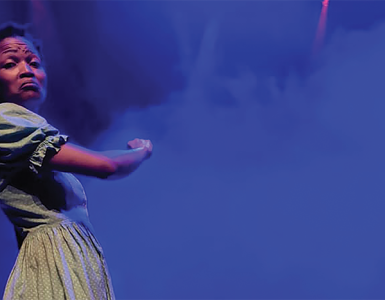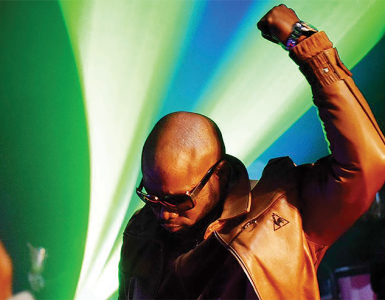CONTEMPORARY: Your favourite rappers really do sound identical now. A study suggests that hip-hop songs today have become more homogeneous, with playlist-driven apps like Spotify playing a key role in the trend…
By Own Correspondent
FRANKFURT, Germany — In a 2014 conversation on Snoop Dogg’s YouTube show, the legendary rapper asked 50 Cent what they missed most about hip-hop’s earlier days. 50 Cent’s answer focused on authenticity: how important it once was to have your own style and energy connected to your records. He noted that now things are just trending, with artists following what the last person did
Snoop Dogg agreed, recalling that when he listened to hip-hop in the 80s, none of the artists sounded alike. Now, he said, everyone in the rap game sounds the same.
A decade later, new research documents exactly what they were noticing. A study published in Finance and Society reveals that contemporary hip-hop has become measurably more homogeneous across nearly every dimension. The researchers argue that Spotify’s business model is driving this standardisation.
Researchers Paul Niklas Kullick and Johannes Petry compared the biggest hip-hop hits from 2002 with tracks from Spotify’s flagship playlist RapCaviar in 2022. Contemporary hip-hop songs are 60% more similar in their word usage than tracks from two decades ago. Nearly 90% use the same drum kit. Specifically, 43 of 50 songs follow one of two nearly identical drum patterns.
Even song duration has converged, shrinking from an average of 4 minutes 19 seconds to just 3 minutes 3 seconds.
The cause isn’t some mysterious decline in creativity. Artists today face an economic system that rewards conformity over originality and profitable predictability over artistic risk.
Back in 2002, hip-hop thrived on regional diversity. New York artists sampled gritty jazz records over rough drumbeats. Los Angeles favoured funk samples and synthesisers. Atlanta’s Crunk scene featured heavy synth basslines and drum machine patterns. Each city had its own sound, promoted through local radio stations and national TV channels.
Spotify changed everything. The platform’s growth-first model shapes listening and curation. The paper notes Spotify basically became profitable in 2024 after price hikes and cost cuts, yet playlists remain the key growth lever, now extending into personal libraries through Smart Shuffle. Spotify reflects a future-oriented asset logic in which growth and engagement metrics loom large. Music becomes framed less as the songs themselves and more as asset value, collateral for investor confidence.
Playlists are the engine of this system. RapCaviar’s audience jumped from roughly 6 million followers in 2017 to far higher by May 2025, and industry reporting has treated it as extraordinarily influential. Joie Manda of Interscope Geffen A&M Records compared its power to New York’s Hot 97 radio station in the 1990s: “A song goes in RapCaviar, and everyone pays attention.”
But landing a spot on RapCaviar requires conforming to certain sonic standards. Songs must blend seamlessly into hours-long listening sessions.
Because a stream counts after 30 seconds, producers and labels optimise for shorter tracks and early hooks. As one high-profile producer put it, sub-3:15 tracks help completion metrics. Major labels have adapted by producing music optimised for playlist compatibility. Hooks come earlier. Songs are shorter to encourage replays. Producers increasingly turn to platforms like LANDR, which offers pre-made loops, drum samples, and melody kits sorted by trending “vibes.”
The study found that 45 of 50 songs on the 2022 RapCaviar playlist use the same refined 808 drum kit: a distorted 808 bass drum paired with an 808 snare, clap, rim, or snap, supported by a thin metallic hi-hat. These drums appear in both melancholic tracks and aggressive ones. Only 10% do not use or imitate this 808 set.
The term “808” refers to the Roland TR-808 drum machine from 1980, celebrated for its futuristic synthesised sound. As hip-hop went digital, countless copycat kits emerged.
Today, the 808 has become virtually the only reference point for percussion in mainstream hip-hop. With just six main 808 drum samples, differences between songs come down to minor mixing techniques.
In contrast, the 2002 playlist featured diverse drum samples and patterns. Only once did the same drums appear on multiple tracks, attributable to the same producer working on the same album. Rhythmic identity built on group affiliation, label style, or regional background. That regional distinctiveness has virtually disappeared.
Songs are also perfectly quantised now, meaning human timing variations are erased and every beat lands precisely on the digital grid. While this technology improves rhythmic performance on a technical level, it removes the imprecisions that once gave music its human character.
Regarding actual rhythm patterns, 43 of 50 songs on RapCaviar follow one of two nearly identical drum patterns, with only slight variations.
Sampling practices have shifted as well. In 2002, producers dug through obscure records to find unique sounds. Missy Elliott’s “Work It” sampled indie rock. Cam’ron’s “Oh Boy” used 70s soul grooves. N.O.R.E.’s “Nothin’” featured Middle Eastern instruments.
By 2022, many producers rely on interpolations, direct copies of memorable melodies from older hits. Ten percent of RapCaviar tracks interpolated recognisable songs. Nardo Wick’s “Dah Dah DahDah” copies the chorus from Suzanne Vega’s “Tom’s Diner.” Drake and DJ Khaled copy the Bee Gees’ “Stayin’ Alive.” Nicki Minaj’s “Super Freaky Girl” is a one-to-one copy of Rick James’ “Super Freak.”
Between 2017 and 2022, Billboard Hot 100 interpolations more than doubled, a shift royalty funds have treated as a “gold mine.” Investment companies like Recognition Music Group have started buying up catalogs of old hits, treating them as assets that will generate future income through royalties. The entire system encourages looking backward rather than forward.
In 2002, artists largely recorded without heavy processing. Each voice was immediately recognisable. By 2022, 88% of RapCaviar tracks used audible auto-tune or heavily edited vocal effects. Many contemporary rappers now record with auto-tune applied in real-time, meaning their original voice never gets captured.
Auto-tune corrects pitch and smooths out imperfections, but when used uniformly across dozens of artists, voices start sounding interchangeable. Regional accents and vocal quirks get flattened by the same digital processing.
In 2009, Jay-Z released a song titled “D.O.A. (Death of Auto-Tune)” to protest the trend. “The guys who did it, did it great,” he said. “Everybody can’t do it. Let them guys do it.”
But the technology spread anyway, encouraged by a platform economy that rewards seamless, frictionless listening.
Even lyrics have converged. Using computational text analysis, the researchers found that word usage in 2022 hip-hop tracks was 60% more similar than in 2002. Songs now cluster around narrower themes, particularly lone-wolf mentality, nihilism, and emotional numbness.
In 2002, lyrics reflected a broader spectrum. Missy Elliott’s “Work It” showcased playful sexuality through inventive wordplay. Ja Rule and Ashanti’s “Always On Time” explored vulnerability in romantic relationships. Nelly and Kelly Rowland’s “Dilemma” centred on longing and moral tension. Even party anthems distinguished themselves through regional slang. Where 2002 felt dialogic and expressive, 2022 tends toward mono-themed content.
None of this means individual artists lack talent. The researchers argue that the economic structure of streaming platforms creates powerful incentives to conform. Artists face a choice: adapt to playlist-friendly formulas or risk obscurity. Independent artists report producing music specifically designed for playlist placement, tracking engagement metrics obsessively, and adjusting their sound to match trending styles.
Spotify’s model encourages what researchers call “bingeability.” Playlists are curated to avoid disruption. Algorithmic features like Smart Shuffle extend this logic to personal libraries, nudging users toward music that fits predictable patterns. The platform keeps people engaged for as long as possible, maximising data for advertisers and demonstrating growth potential to investors.
Hip-hop emerged as a voice for marginalised communities, a platform for social commentary and resistance. When economic pressures homogenize the genre, that subversive potential diminishes. Labels and platforms already grapple with AI-generated tracks and machine-learning tools that assist composition, which could intensify homogenisation.
Snoop Dogg and 50 Cent sensed something had changed in hip-hop long before researchers quantified it. Their observations about lost authenticity weren’t nostalgia or gatekeeping. They were noticing how economic systems shape culture.
When platforms reward sameness over originality, music loses the diversity that made hip-hop powerful in the first place. The data now confirms what those artists knew: hip-hop really does sound the same, and the business model driving streaming plays a major role in why. – StudyFinds
In A Nutshell
• 2022 hits on RapCaviar cluster: shorter songs, shared keys/tempos, and common textures.
• 90% use refined 808 kits; 43 of 50 follow two similar drum patterns.
• 88% feature audible auto-tune or heavy effects; quantisation smooths out “swing.”
• Lyrics show 60% higher similarity; playlists and algorithms reward predictability.































